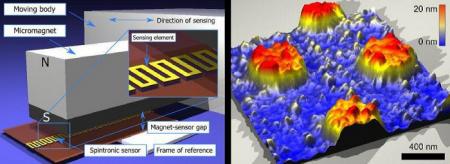Researchers discover that current flow in a ferromagnetic conductor can produce a magnetic-moment directed spin polarization
Researchers from NYU and IBM Research have created a spintronics device from a ferromagnetic conductor and discovered that current flow in the conductor can produce a spin polarization that is in a direction set by its magnetic moment.
This discovery means that magnetic moment direction can be set in just about any desired direction to then set the spin polarization - this is not possible using the contours of the spin Hall effect in non-magnetic heavy metals.



